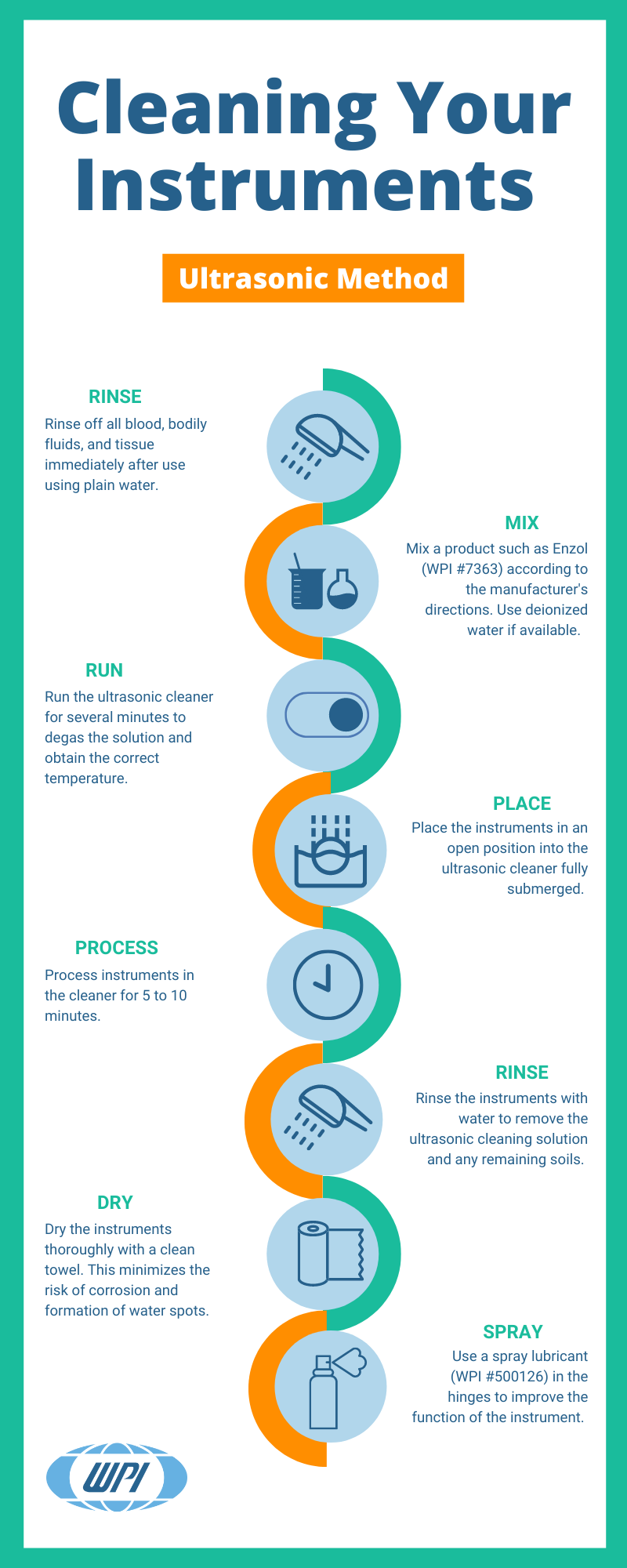Ultrasonic cleaning is the most effective cleaning method for maintaining your surgical instruments, because of its cavitation. Vibrating sound waves create micron-size bubbles in solution that grow as the pressure in the unit changes. Eventually the bubbles implode. The bursting bubbles effectively dislodge debris, even in the most difficult to reach places. Use of ultrasonic detergent greatly improves the effectiveness of the cleaner, because it increases the number of tiny bubbles

- Immediately after use, rinse instruments under warm or cool running water to remove all blood, body fluids and tissue. Dried soils may damage the instrument surface and make cleaning difficult.
CAUTION: Do not use hot water since this causes proteinous substances to coagulate. - Before you begin, fill the ultrasonic cleaner with deionized water and enzymatic cleaner like Enzol according to the manufacturer’s recommendations. You may also use a neutral pH or mild alkaline detergent like Alconox.
- Run the cleaner for several minutes to allow the temperature to equilibrate and to remove any gases from the solution.
- Separate instruments by metal type and process them in batches. For example, do not mix chrome plated and stainless steel instruments in the same cleaning cycle. Place the instruments in an open position in an ultrasonic cleaner. They should be fully submerged. Sharp instruments should not touch other instruments.
- Allow the surgical instruments to process for 5–10 minutes before removing them from the ultrasonic bath.
- Rinse your surgical instruments with water to remove ultrasonic cleaning solution and any remaining soil.
- Dry your surgical instruments thoroughly with a clean towel. This minimizes the risk of corrosion and formation of water spots.
- Visually inspect each instrument.
- Spray a lubricant (WPI #500126) on the hinges to improve function of instrument. Lubricate your surgical instruments after the last rinse cycle and before any sterilization cycle. After proper cleaning, your instruments are ready for sterilization.
If you have questions about your surgical instruments, contact us.





Request
Catalogue
Chat
Print